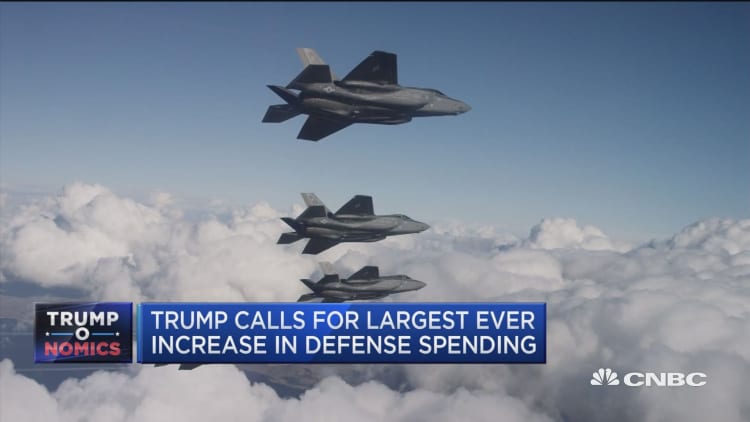Russia has dropped out of the top five countries with the largest defense spend for the first time since 2006, according to new international data Monday.
Total world military expenditure rose to $1.8 trillion in 2018, according to new data from the Stockholm International Peace Research Institute (SIPRI), marking an increase of 2.6% from 2017 and the highest total spend since 1988.
The five biggest spenders in 2018 were the U.S., China, Saudi Arabia, India and France, which together accounted for 60% of global military spending.
Military spending by the U.S. increased for the first time since 2010, while spending by China grew for the 24th consecutive year, the Swedish research institute noted.

While the U.S. increased spending by 4.6%, to reach $649 billion in 2018, China increased its spending by 5%, to $250 billion.
Meanwhile, Russia was the sixth-largest nation in terms of military spend, at $61.4 billion, but its spending decreased by 3.5% compared with 2017.
Independent think tank SIPRI, which monitors developments in military expenditure worldwide and publishes its "Military Expenditure Database" every year, noted that the decrease comes after a period of expansion.
"Russia's major military modernization programme, which started in 2010, led to significant annual increases in military spending (between 4.9% and 16%) through 2015. Starting in 2016 Russia's military budget has trended downwards."
Due to a one-off government debt repayment of almost $11.8 billion to Russian arms producers in 2016, spending rose by 7.2% that year. Without this payment, Russian military spending would have fallen by 11%, SIPRI noted. "The payment also explains a large part of the sharp 19% drop in 2017: excluding the repayment, spending would have decreased by 2.8%," SIPRI said.
Although Russia's spending fell again in 2018, it is still 27% higher than in 2009, SIPRI noted.
Military spending in several central and eastern European countries shows a certain nervousness at a powerful and often provocative neighbour Russia. For example, military spending in Poland rose by 8.9% in 2018 (to $11.6 billion) and was up 21% in Ukraine, to $4.8 billion.
Russia annexed Crimea from Ukraine in 2014 and has supported separatists in the east of the country. Russia has also had recent disputes with NATO countries in its backyard, such as the Baltic nations of Latvia and Lithuania, following various air and sea provocations, sorties and military drills in the Baltic Sea.
SIPRI data showed military spending by Bulgaria, Latvia, Lithuania and Romania also grew (ranging from 18% to 24%) in 2018.
"The increases in Central and Eastern Europe are largely due to growing perceptions of a threat from Russia," Pieter Wezeman, a senior researcher with the SIPRI AMEX program, said of the data.
"This is despite the fact that Russian military spending has fallen for the past two years."
Despite the data, President Vladimir Putin has not wasted opportunities to promote new weapons being developed and tested by Russia. In his State of the Nation address last March, he announced a raft of "cutting-edge, high-tech weapons," including a hypersonic missile that cannot be tracked by anti-missile systems, that could join its arsenal by 2022.
Although part of a decline in defense spending could be due to the aims of its modernization program being met, Russia is nonetheless constrained to reduce spending amid lower oil prices and tighter economic conditions.
It is subject to international sanctions for its annexation of Crimea, meddling in the 2016 U.S. election and suspected poisoning of the former Russian spy Sergei Skripal in the U.K, among other factors.
SIPRI military expenditure refers to all government spending on current military forces and activities, not only arms and equipment purchases.



